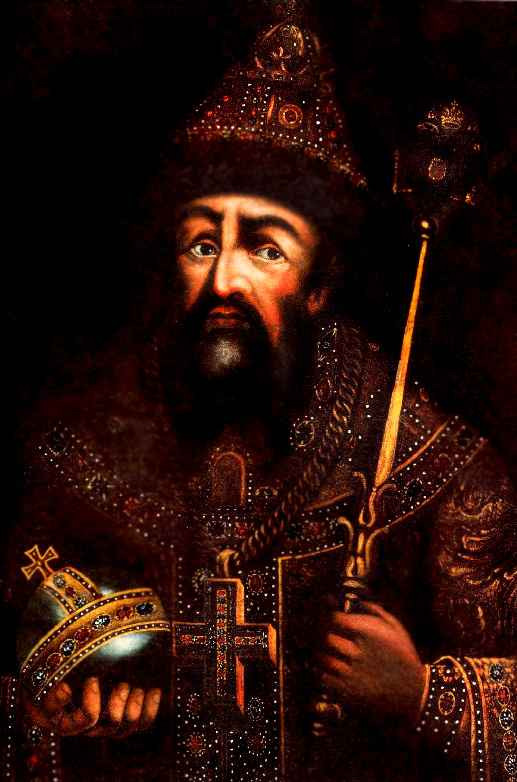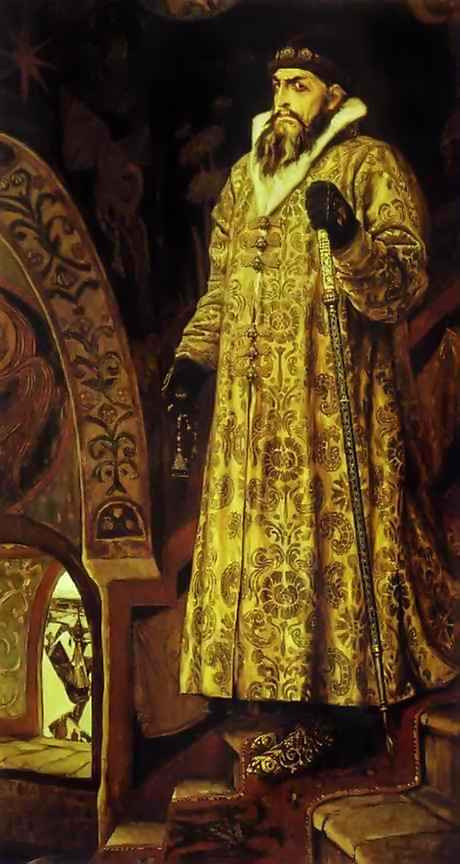The Russian tsar is notorious for killing and torturing aristocrats
or a notorious wicked person, killing many people including boys, but still considered by many people to be justified.
Ivan IV was the first Tsar of Russia , also known as Ivan Terrible or Ivan the Terrible. The reason he was called was because of the notorious cruelty, killing many of them including boys. However, during his years in office, Ivan IV also achieved many achievements and until now, he remains one of Russia's most controversial leaders.

Painting portraits of the Russian prince Ivan the Tyrant.
Humiliating childhood
Born in Moscow on August 25, 1530, Ivan IV was the son of the Grand Duke (equivalent to King) Vasily III, who died when Ivan was only 3 years old. Later, Ivan was declared the Grand Duke of Moscow at the request of his father.
Originally, Ivan's mother was a regent, but she died when Ivan was eight years old. She was replaced by a group of aristocrats who fought fiercely to gain power.
In front of the public, Ivan is respected by the nobles. But when he returned to the palace, he was often left alone. Ivan grew up in loneliness and was often humiliated by the wealthy aristocracy. Abuse, violence and murder are very common in the palace at that time. It is believed that Ivan's miserable childhood seemed to have explained that when he grew up, he hated the aristocracy and conducted persecution against them.

Ivan IV was the notorious cruel man, killing many people including his son.
The first Russian tsar
Smart and interested in reading, Ivan soon dreamed of taking great power, according to Russiapedia, the Russian news agency RT. In 1547, at the age of 16, he was honored as the Russian emperor - the first ruler to receive the title.
The young Tsar began to reform and modernize the country. He modified the law, created an elite army and issued self-governing policies in the countryside. During this period, Russia's first printed newspaper was also launched and many new commercial routes were opened.
Ivan wants Russia to become a military power. At that time, European and Asian Tatar troops were devastating the northeastern part of Russia. In 1552, Ivan destroyed two main Tatar bases. He began to expand Russian territory into Siberia, merging a large number of Muslims and turning Russia into a multi-ethnic and multi-religious nation.
Ivan IV was also credited for building the famous Basilica of St. Basil (currently in Red Square) in honor of winning the Tatar army. The magnificent church is the work of two architects - Postnik and Barma. According to legend, Ivan liked church so much that he ordered blind architects to blind him. He did not want them to build anything like this church anywhere else.

Ivan IV was also credited for building the famous St. Basil's Cathedral.
Change personality
However, shortly after the church was built, Ivan's life turned to a new page. His personality and policies changed completely. In 1553, he suffered a fatal illness and a few years later, his beloved wife, Anastasia, died.
Suspecting the nobles had poisoned Anastasia and plotted to overthrow the throne, Ivan embarked on a campaign to suppress and kill the aristocracy.
Suddenly, in the winter of 1564, Ivan secretly left Moscow, declaring he wanted to abdicate. People fear and call him back. After prolonged negotiations, Ivan agreed to return but on his own terms, demanded absolute authority to punish anyone he deemed disloyal.
In 1565, Ivan established a new tool to control power, a system called Oprichnina. According to Russiapedia, members of Oprichnina can be considered as Russia's first police force.

Painting illustrates the bodyguard of Ivan Terrible.
Selected by Ivan himself, Ivan's bodyguards spread horror across the country. Wearing black clothes and riding a black horse, the bodyguard carries a dog head - the symbol of eliminating the traitors and enemies of the tsar - everywhere. Famed for his cruel tortures, the guards executed anyone who was dissatisfied with Ivan, confiscated their land and possessions. Therefore, Oprichnina was a strong blow to the aristocracy at the time, when the Russian monarchy became stronger and stronger than ever.
One of the most horrific campaigns of the guards was the massacre of 1570 in the rich city of Novgorod. Doubting that the people here betrayed him, Ivan personally led the army to sweep the place. The city was devastated and thousands of people were killed, including women and children.
The recession of Ivan
Meanwhile, the tsar Ivan himself became more erratic. This period, from a hot tempered person, to a beer party, Ivan turned to a religious interest, often praying and going to a vegetarian diet in distant monasteries. This is also the time when he killed his son Ivan Ivanovich. However, there is still much controversy about how Ivanovich was killed.
According to Russiapedia, in 1581, in an intense debate, Ivan accidentally killed his first son and heiress by a sharp spear.
The Mad Monarchs page describes the incident in more detail. First, Ivan beat Ivanovich's pregnant wife because she saw her being improperly dressed. As a result, she miscarried. Ivanovich argued with his father, making him angry. While angry, Ivan picked up the spear, stabbed him in the head. Ivanovich fell into a coma a few days before his death. Ivan IV was in extreme pain, constantly banging his head on his son's coffin.

The painting illustrates Ivan killing his son.
Ivan's love life is also increasingly misleading when he constantly changes his wife, sometimes marrying new after divorce. It is unclear exactly how many wives Ivan has, but most historians think he married seven times.
At the end of his life, Ivan was often angry and became unpredictable. According to Biography, when health weakens, Ivan is obsessed with death. Tsar constantly called witches to help him maintain his health but to no avail. On March 18, 1584, Ivan died of a stroke. He gave the throne to his son Feodor, who brought Russia into a chaotic period afterwards.
It was not until the 1960s, when Ivan's body was examined, that new researchers discovered high levels of mercury. This raises the speculation that he may be poisoned, according to Russiapedia.
The tsar is controversial
The role of the reigning monarch for 37 years is still controversial. As a brutal tsar, Ivan is also a theologian, famous speaker and one of the best educated people of his day.
Throughout his life, Ivan is an avid reader and is believed to have a collection of 800 manuscripts in Greek and Latin. It is unclear what happened to Ivan's library after his death. While some people claim that these documents have dissipated, others say they are hidden in the Kremlin.
Although the campaign against the Russian aristocracy is considered brutal, many believe that this is a righteous action, helping to eradicate corrupt mandarins.

Painting illustrates tsar Ivan and his nurse.
Even Ivan's nickname is a controversial one. The Russians call him Ivan Grozny and grozny is often translated into English as terrible (terrible). However grozny actually means causing fear, intimidation, surprise, not necessarily sinister or cruel. Some believe that when he called him Ivan Gronzy, the Russian people meant Ivan Terrifying or Ivan.
- Reveal the eating preferences of Russian Tsar
- Finding the arsenal of Tsar Ivan the Terrible
- Russia sought the solution of the last two Tsar's children
- The emperor's great victory brought Russia up from zero
- The world's largest atomic bomb explosion 54 years ago
- Super nuclear bomb has the most explosive power in the world
- The war caused 1.7 million Russians to die, and the poor people died
- Fire hoses are more dangerous in the winter
- Strange story about the royal treasures of the Russian Royal Family
- Discovered a secret intelligence tunnel from the 16th century in Russia
- America unveiled the notorious weapons of damage
- The most powerful thermonuclear bombs in the world
 'Fine laughs' - Scary and painful torture in ancient times
'Fine laughs' - Scary and painful torture in ancient times The sequence of numbers 142857 of the Egyptian pyramids is known as the strangest number in the world - Why?
The sequence of numbers 142857 of the Egyptian pyramids is known as the strangest number in the world - Why? History of the iron
History of the iron What is alum?
What is alum?